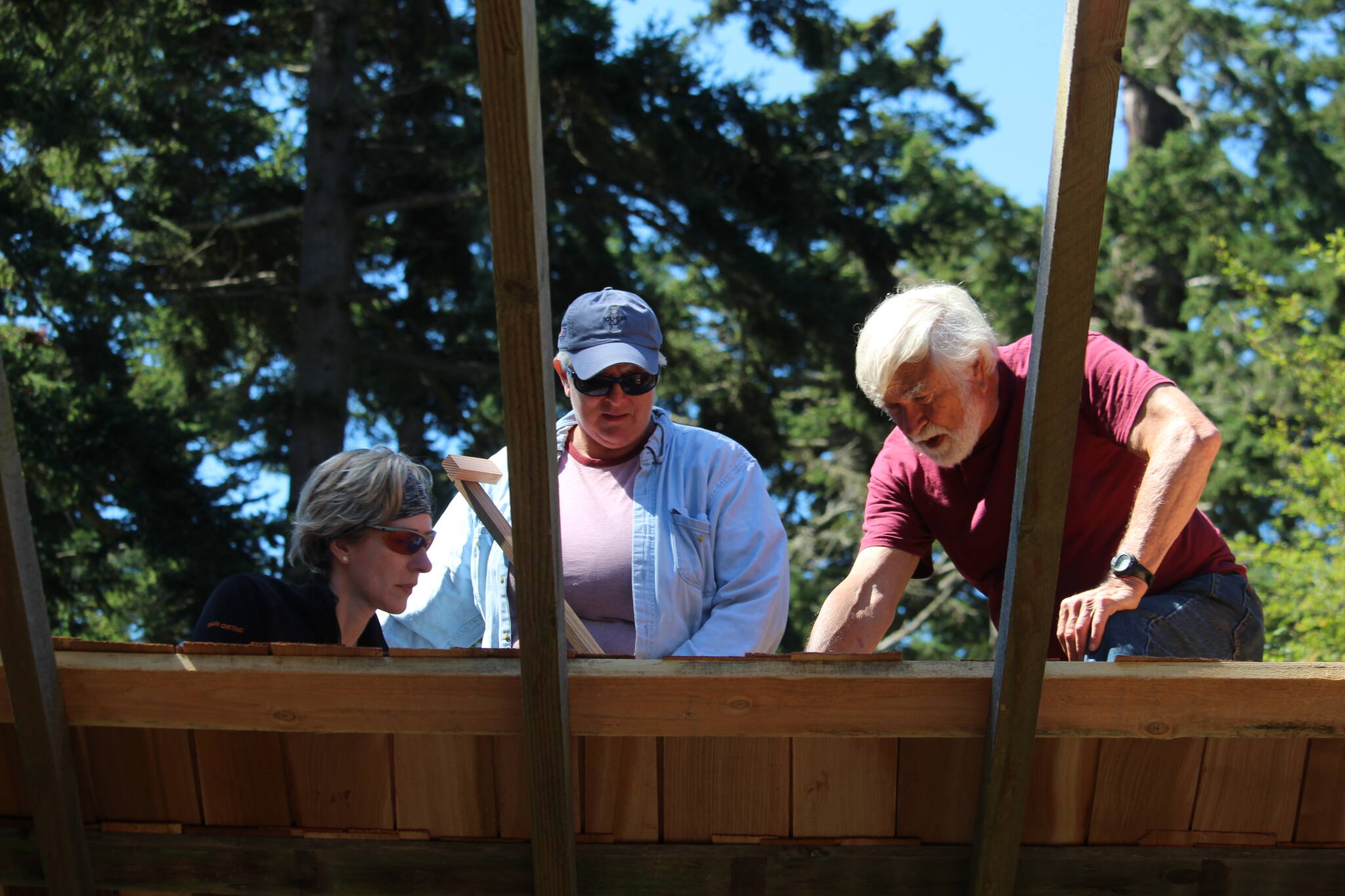If you’ve walked the Pratt Loop in Ebey’s Landing National Historical Reserve this week, you may have heard the pings of hammers on nails mingling with the usual ambience of rushing wind and twittering birds.
The source of the sound is a construction site at the Pratt Machine Shed, where volunteers from all over the country have been working alongside local preservation expert Harrison Goodall to restore and preserve the historic structure.
The restoration project includes the construction of a roof in period style, some repairs to the siding and structural work to the front posts of the building for stability, Goodall said. Most importantly, the group aims to maintain the historic character of the shed.
“We want it to be what it is — a part of the legacy of Pratt,” he said.
The materials for the project were funded by the National Park Service and Goodall. The volunteers began their work on Monday and will continue into next week. The group, led by Ed Brown of Lansing, Mich., has been working together on preservation projects all over the country for 27 years.
The decades-long odyssey of service began as a family affair. In 1995, Brown, his wife and their two daughters were visiting a friend in Boston who asked for their help restoring her grandparents’ historic family homestead on Mormon Row in Jackson Hole, Wyoming.
Brown had some construction experience, having begun working with Habitat for Humanity a few years previously. He and one of his daughters wrangled up a handful of volunteers — largely people who built handicap ramps on Habitat homes — and took on the project.
The group ended up returning to Jackson Hole to work on more preservation projects the following two summers. In 1997, Brown met Goodall, who was in charge of training volunteers and National Park Service members in historic preservation. Goodall began connecting the group with additional projects in Alaska, Oregon, Utah, West Virginia, Texas and other locations across the country.
To date, Brown and his family have brought over 100 individual volunteers along to more than 40 preservation projects. Brown has even taken groups abroad to projects in South Africa and Peru.
“It was just a random happening,” Brown said of his becoming involved in historic preservation. “It’s been a very satisfying 27 years.”
Goodall, a Langley resident, brought the volunteers out to the preserve on another occasion some 10 years ago. As a Whidbey resident, Goodall said the group’s current project, the Pratt Machine Shed, is both literally and figuratively close to home for him.
“Some people might say, ‘Well, it’s just a little shed. What difference does it make?’ It makes a lot of difference,” he said. “A special thing is happening, in my mind.”
Reserve Manager Marie Shimada said Frank Pratt Jr., the original owner of the property where the shed is located, and his family were some of the earliest promoters of preservation in Central Whidbey. Pratt, an attorney, and his wealthy wife Helen Tower Pratt began purchasing parcels in Central Whidbey in 1901. From the family’s home, they had an amazing view of the Olympic and Cascade mountain ranges, the prairie, the many farm fields, the forest and the Salish Sea.
The Pratts fell in love with the view and wanted to ensure it would remain beautiful, unmarred by residential development, and publicly accessible in perpetuity, Shimada said.
Pratt left the property to his son, Robert Pratt, who in turn willed the property to the nonprofit Nature Conservancy. The conservancy eventually transferred ownership of many of the parcels to the National Park Service.



